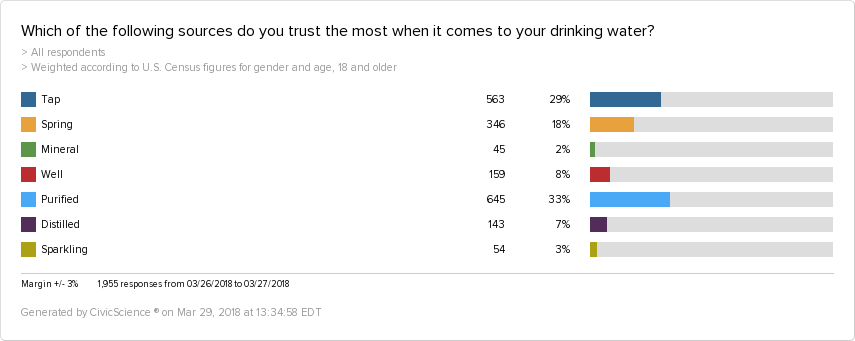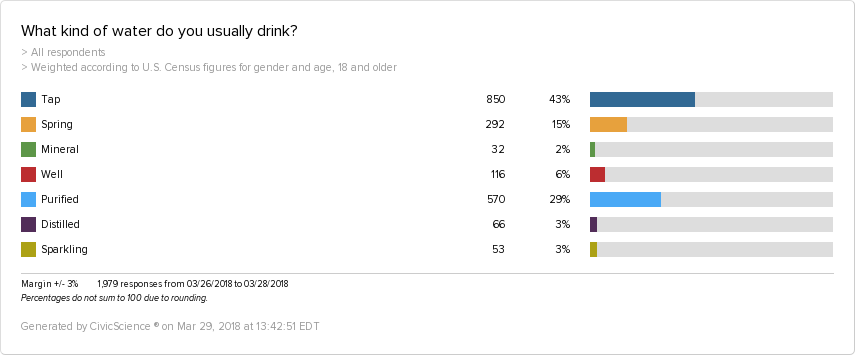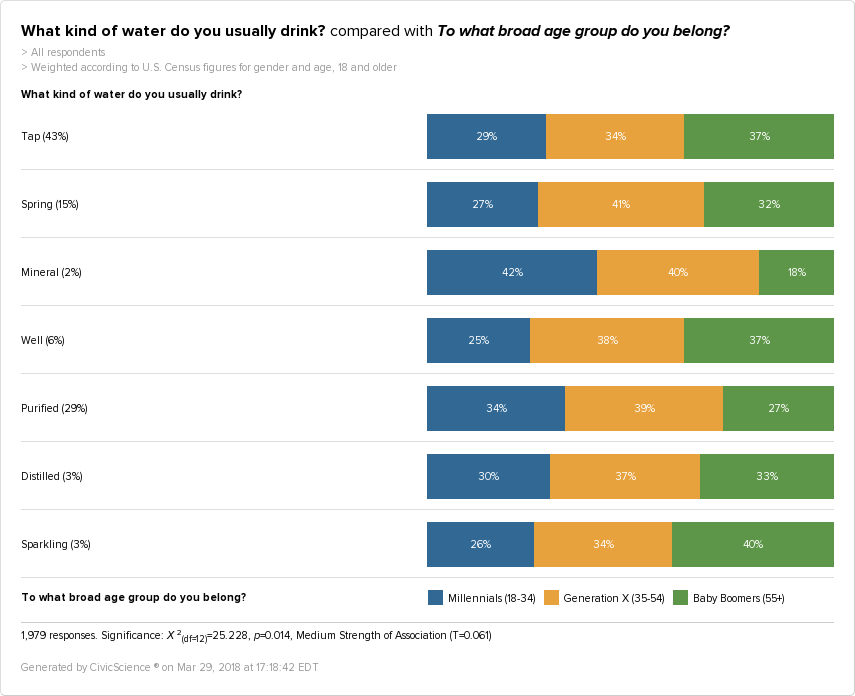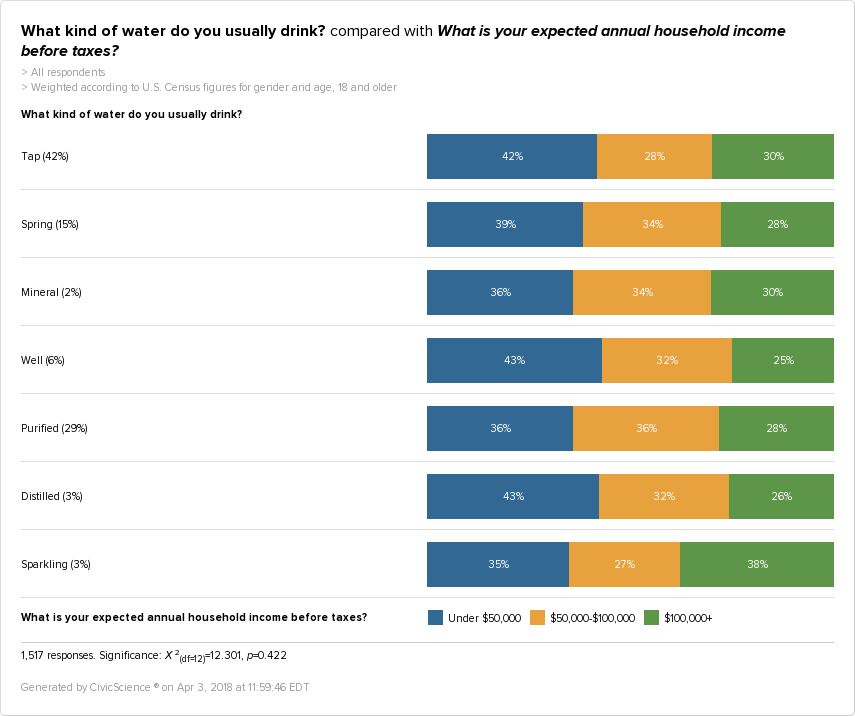The Gist: Although US adults trust purified water most, they regularly quench their thirst with water straight from the tap.
For years, drinking water has been a topic of contention. From where we source our water, to the containers we use to drink it, and how many ounces we should be drinking each day, everyone has an opinion. It often feels like, in the world of water, there’s never a dull moment.
Just when you thought you were up-to-date, a study conducted by researchers from the State University of New York at Fredonia published data that revealed 93% of bottled water showed some sign of microplastic contamination.
In light of this, we wondered how the public felt about their drinking water. Could these scientific developments impact consumers in a big way? Is bottled water even a priority in 2018? To start, we asked which water sources seemed the most trustworthy.
According to our results, 33% of US adults trust purified water the most. For the purposes of this poll, we can understand purified drinking water to be any drinking water that has gone through a process to remove any chemicals and contaminants. There are a variety of different kinds of purification out there, but the most commonly known might be that refillable water filter jug you keep on your counter or in your fridge.
Coming in at a close second in trustworthiness was tap water, with 29% of US adults indicating this is the source in which they have the most confidence. Clearly, the public still feels strongly that tap water is a safe and reliable choice.
Spring water–which is defined as water that comes from an underground source and may or may not be purified– came in third, with 18% of US adults indicating this as the source they trusted most. Since most of the bottled water we drink is considered spring water, this data could allow us to conclude that, in general, bottled water favorability is already far below that of tap and purified water.
That said, the sources we trust and the sources we actually use are not always the same thing. So we took another approach, this time asking what kind of water individuals usually drink. This is what we found:
Here, tap water jumps ahead, with 43% of US adults indicating that this is the kind of water they drink on a regular basis. Just 29% of responders regularly drink purified water–a slight decrease from the 33% who said they trusted it most–while 15% swear by spring–another slight drop.
This confirms what we saw earlier–that general trust and reliance upon bottled water is low.
But who exactly is drinking this bottled water? Let’s take a look.
As it turns out, different generations have different preferences when they choose bottled water. The majority of US adults who drink spring water are Gen X-ers, while those who drink mineral water are skewed slightly more Millennial. Baby Boomers, on the other hand, have hopped on the sparkling water bandwagon, rounding out this diverse range of age-specific bottled water interests.
But the one type of water everyone can agree on is tap.
Although US adults who make under $50,000 a year are the largest group drinking tap water, the data shows that individuals of every income level turn to their sinks when they need to quench their thirst, proving that this source transcends not just generational, but also socio-economic boundaries.
But what happens when we take a look at living location? Could where you live be a factor in what kind of water you choose to consume?
While it may come as no surprise that 52% of US adults who turn to tap water live in the suburbs, 25% of city dwellers also end up filling their cups from the faucet. This is a larger percentage than the 21% of US adults in rural areas who do the same. Clearly, even in a world where the possibility of lead and other toxins in city water is a very real threat, confidence in tap remains strong.
So, what does this mean in light of the news on plastic particles present in bottled water? For starters, companies may consider investing more time and resources into making purification systems consumers can purchase, capitalizing on the fact that purified water is the most trusted–but not the most widely used– water source.
And yet, to a certain extent, the bottled water and water purification industries may always have an uphill battle against the convenience of turning on the faucet. After all, while US adults put their faith in purified water above all else, when it comes down to daily drinking habits, tap water comes out on top.













